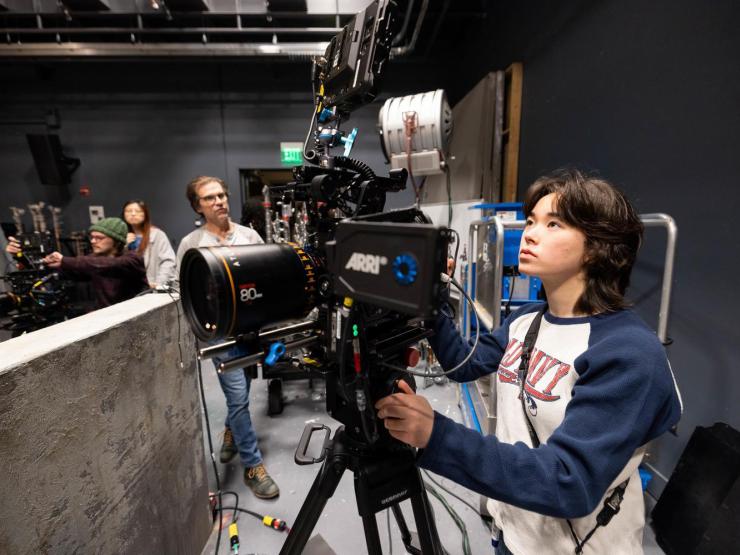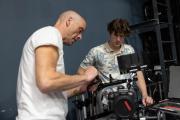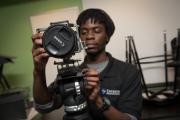Emerson College is building upon its long history of excellence in film and media education by launching a School of Film, Television, and Media Arts. The new School will keep as its foundation the rigorous, hands-on curriculum of the former Department of Visual and Media Arts.
Unique among film programs, we are a traditional film school that offers the opportunity to explore a variety of media arts disciplines, including photography, installation art, animation, virtual/augmented reality, music/sound design, and virtual production. Our students also explore applied film scholarship, as our production curriculum is enriched by critical media history, theory, and analysis courses.
From day one, our students dive right in and start working with talented instructors, classmates, and crew members. School of Film, Television, and Media Arts faculty members are not only teachers, but also industry players, scholars, and experts. They assist students in developing their craft both inside and outside the classroom in film- and media-related student organizations. The College’s impressive slate of professional-grade facilities and equipment help prepare students to thrive in an evolving media landscape, all grounded in the power of storytelling.
Students also benefit from studying in a city that ranks among the top five U.S. media markets. Boston’s prominence as an increasingly popular location for major feature film shoots provides limitless opportunities for internships, jobs, and freelance assignments. Additionally, the area boasts dozens of theaters, television and radio stations, film festivals, and art museums and galleries that offer outlets for students’ work.
Our graduates join an extensive alumni network of 58,000+ that spans every medium—and every market—in the entertainment industry.
Programs in the School of Film, Television, and Media Arts
The School of Film, Television, and Media Arts is home to four undergraduate majors and two graduate programs:
- BA in Media Arts Production
- BFA in Media Arts Production
- BA in Media Studies
- Global BFA in Film Art
- MFA in Film and Media Art
- MFA in Writing for Film and Television (Low-Residency)
The School of Film, Television, and Media Arts Community
Faculty
Experiential Learning in the School of Film, Television, and Media Arts
Programs and Highlights
News and Events
Find an event on Emerson Today!
Connect with Us
Contact our staff directly if you have questions about our programs.


